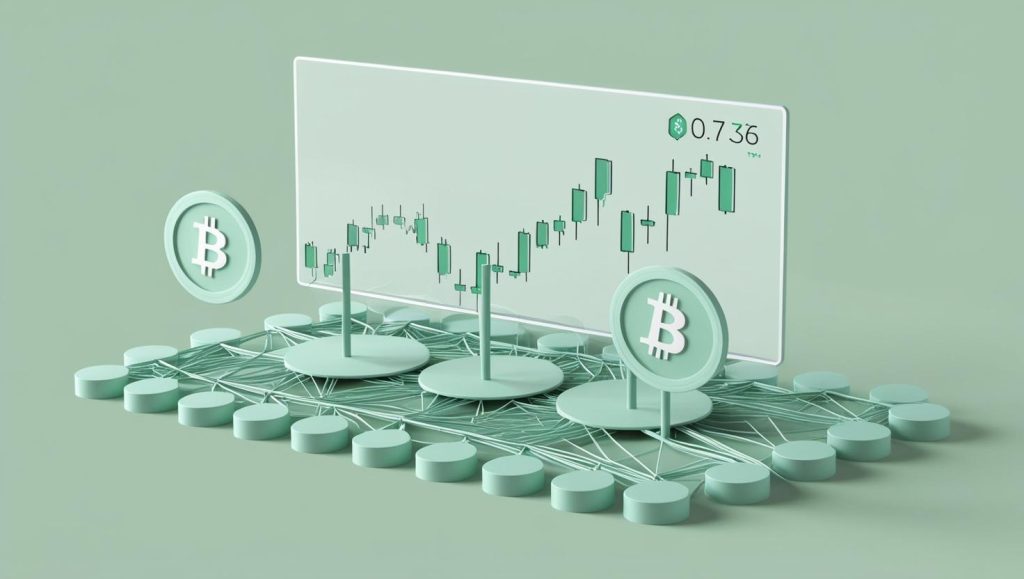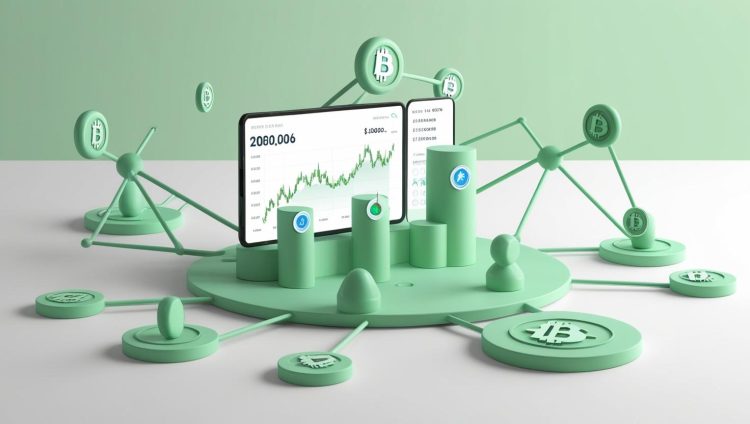Introduction
The rapid rise of decentralized finance (DeFi) and blockchain technology has ushered in a new era for cryptocurrency trading. Decentralized exchanges (DEXs), such as Uniswap, SushiSwap, and PancakeSwap, offer a distinct contrast to traditional centralized exchanges (CEXs) like Binance, Coinbase, and Kraken. While DEXs boast the appeal of removing intermediaries and offering users full control over their funds, many users wonder: Are decentralized exchanges really more secure than their centralized counterparts?
In this article, we will explore the security aspects of both types of exchanges, weigh the risks and benefits, and determine which platform offers the most protection for users in today’s rapidly evolving digital asset ecosystem.
1. Understanding the Difference: Centralized vs. Decentralized Exchanges
1.1 Centralized Exchanges (CEXs)
Centralized exchanges are traditional platforms where users deposit their funds into the exchange’s control. These exchanges act as custodians, handling user funds and facilitating trades between buyers and sellers. Examples include Binance, Coinbase, Kraken, and Huobi.
- Pros:
- Ease of Use: Centralized exchanges are typically user-friendly, offering intuitive interfaces for beginners.
- Liquidity: CEXs usually have higher liquidity, making it easier to execute large trades without slippage.
- Customer Support: Centralized platforms offer customer service, meaning that if users lose access to their account or encounter issues, they can usually get help.
- Cons:
- Custodial Risk: Since the exchange holds your assets, it becomes a target for hackers. If the exchange is hacked, users risk losing their funds.
- Regulatory Risks: CEXs are subject to regulatory oversight, and users’ data is often centralized and stored in compliance with KYC (Know Your Customer) and AML (Anti-Money Laundering) laws.
- Privacy Concerns: Users must trust the platform with their personal data, and there is always a risk of internal fraud or mismanagement.
1.2 Decentralized Exchanges (DEXs)
Decentralized exchanges, on the other hand, operate without a central authority or custodian. DEXs like Uniswap, SushiSwap, and PancakeSwap allow users to trade directly with one another through smart contracts on the blockchain, without depositing funds into a centralized wallet. Liquidity is typically provided by users through automated market makers (AMMs).
- Pros:
- User Control: Users retain control over their funds at all times. You never need to trust an intermediary with your assets.
- Privacy: DEXs generally do not require users to undergo KYC procedures, allowing for greater anonymity.
- Censorship Resistance: Decentralized exchanges are less likely to be subject to government restrictions or censorship because they don’t rely on a single server or jurisdiction.
- Cons:
- User Responsibility: If you lose access to your private keys, you lose access to your funds—there is no customer support to assist in recovery.
- Lower Liquidity: While liquidity is increasing on DEXs, it may still be lower than on centralized exchanges, especially for less popular tokens or smaller trading pairs.
- Complexity: Some DEXs can be harder to use, particularly for beginners, as users must manage their own wallets and interact with decentralized applications (dApps).
2. Security Risks: Centralized vs. Decentralized Exchanges
2.1 Security Risks of Centralized Exchanges
Despite offering convenience and customer support, centralized exchanges have a number of inherent security vulnerabilities:
- Hacking and Data Breaches:
Centralized exchanges hold users’ funds in their own wallets, making them a prime target for hackers. Over the years, we’ve seen major breaches at platforms like Mt. Gox (2014), Binance (2019), and KuCoin (2020). In each case, hackers were able to steal millions of dollars’ worth of crypto assets. - Internal Fraud or Mismanagement:
Since centralized exchanges manage user funds, they are susceptible to internal fraud or mismanagement. The exchange’s employees, or even malicious actors within the organization, may have the ability to withdraw users’ funds illicitly. - Single Point of Failure:
A major security vulnerability in CEXs is the single point of failure. If the exchange’s central servers are compromised or go offline, it can lock users out of their accounts, prevent withdrawals, or cause other operational issues. The entire platform’s security hinges on the safety of its centralized infrastructure. - Regulatory and Compliance Risks:
Centralized exchanges are often forced to comply with local and international regulations, which could involve sharing personal information, freezing accounts, or freezing user funds during legal disputes. This introduces a risk that may not exist with decentralized platforms.
2.2 Security Risks of Decentralized Exchanges
While DEXs remove the need for intermediaries, they are not without their own set of security risks:
- Smart Contract Vulnerabilities:
DEXs rely on smart contracts to facilitate trades. These smart contracts can contain bugs or vulnerabilities that may be exploited by hackers. High-profile incidents, such as the Reentrancy Attack on the DAO in 2016, have shown that flaws in smart contracts can result in significant losses. Even minor bugs in the code of a DEX can open doors for exploits, allowing malicious actors to drain liquidity pools or perform front-running attacks. - Rug Pulls:
A “rug pull” occurs when the creators of a decentralized exchange or token deliberately withdraw liquidity, effectively stealing funds from users. This is particularly common in the world of DeFi, where developers may create a token or liquidity pool, only to pull out all the liquidity once it becomes popular. Since DEXs are decentralized and generally anonymous, users are often unable to seek recourse if a rug pull occurs. - Phishing and Fraudulent Smart Contracts:
Even though DEXs do not control user funds, they are still vulnerable to phishing scams. Malicious actors can create fraudulent tokens or smart contracts, luring users to interact with them. This is particularly dangerous for newcomers who may not be familiar with the technical aspects of blockchain transactions. - Liquidity and Slippage Risks:
Due to lower liquidity on DEXs, users may experience slippage—when a trade is executed at a price different from the quoted price due to insufficient liquidity. In some cases, malicious actors can exploit this slippage by manipulating the market.

3. Key Security Considerations for Both Exchange Types
3.1 For Centralized Exchanges:
- Enable Two-Factor Authentication (2FA): Always enable 2FA to add an additional layer of security for your account.
- Withdraw Funds Regularly: Don’t leave large amounts of cryptocurrency on centralized exchanges. Withdraw assets to a secure wallet when not trading.
- Use Trusted Exchanges: Stick to reputable and established exchanges with a track record of security, such as Binance, Coinbase, or Kraken.
- Consider Insurance: Some centralized exchanges offer insurance to cover user funds in case of a hack. Make sure to check if your exchange provides this service.
3.2 For Decentralized Exchanges:
- Verify Smart Contracts: Always double-check the contract code or use a trusted platform like Etherscan to ensure the smart contract is safe and has been audited.
- Use Hardware Wallets: For DEX trading, use a hardware wallet like Ledger or Trezor to keep your private keys offline and secure.
- Stay Informed: Regularly check the community and developers’ updates for potential vulnerabilities or known issues with a DEX.
- Beware of Scams: Be cautious when interacting with new, unverified tokens or liquidity pools, as they may be a trap for rug pulls or phishing attacks.
4. Conclusion: Which is More Secure?
Centralized exchanges have the advantage of ease of use and customer support, but their custodial nature introduces a higher level of risk. They are susceptible to hacking, fraud, and internal mismanagement, and their users must trust the platform with their assets.
On the other hand, decentralized exchanges eliminate intermediaries and allow users to retain full control over their funds, reducing the risk of custodial hacks. However, DEXs come with their own set of challenges, such as smart contract vulnerabilities, rug pulls, and phishing attacks.
Ultimately, whether a DEX or CEX is more secure depends on how you interact with them. For more control and privacy, a DEX may be safer, but it requires a higher level of user responsibility and caution. For ease of use and customer support, CEXs are a better choice, but they involve more trust in third parties.
In both cases, security is a shared responsibility. Whether you choose a centralized or decentralized platform, you must take the necessary steps—such as enabling two-factor authentication, using hardware wallets, and staying vigilant against phishing and scams—to protect your assets.

















































